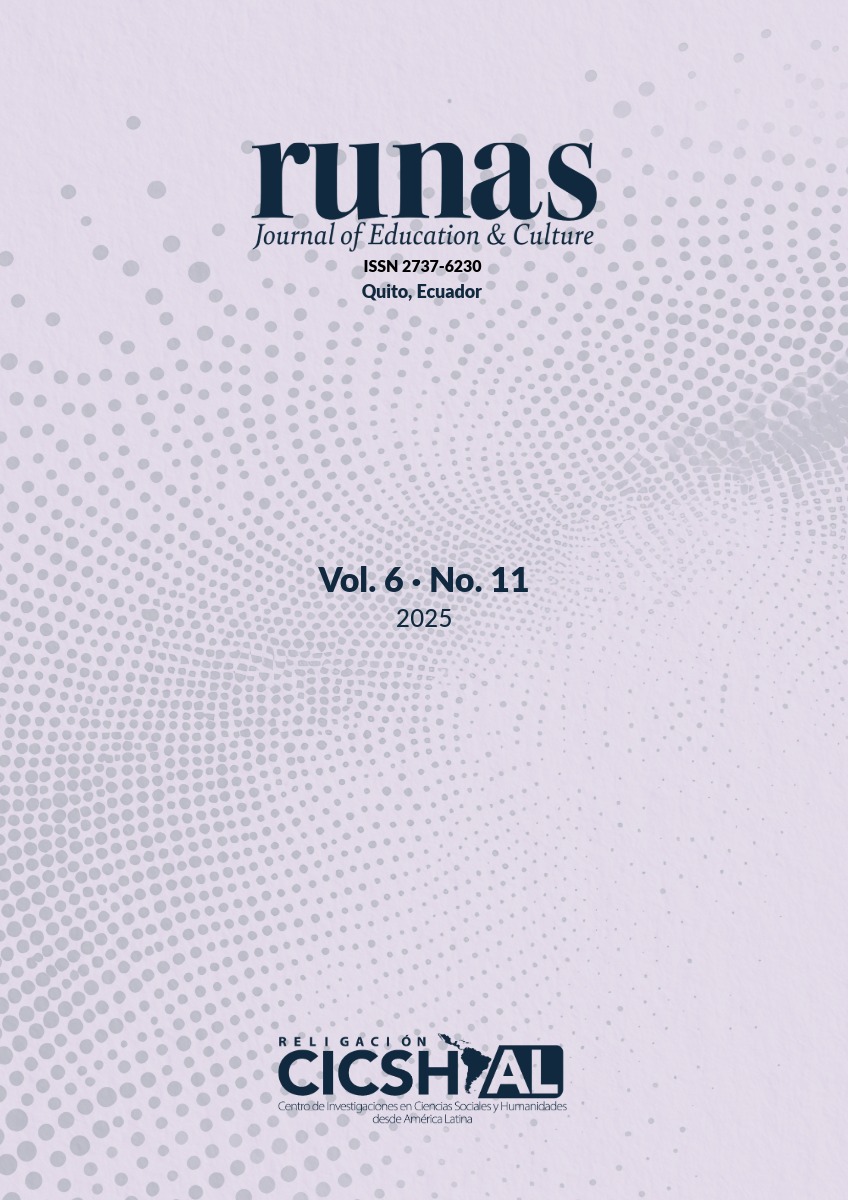Abstract
Sport participation among adolescents is determined by psychosocial factors that influence their continuation or abandonment. This study examines the impact of family support, school context, socioeconomic conditions, peer influence, and gender on sports practice. Through a systematic review of studies indexed since 2015, the PRISMA model was applied to select research on physical activity and psychosocial factors in adolescents. The results indicate that family support is key to staying in sports, while a school environment with structured programs and motivational coaches facilitates adherence. Economic limitations hinder access to organized sports, and peer influence, along with social networks, motivates participation. Furthermore, gender inequalities persist, particularly affecting adolescent girls. It is concluded that strategies should include family support, gender equity, access to infrastructure, and the use of social media to promote physical activity.
References
Botella, J., & Zamora, Á. (2017). El meta-análisis: una metodología para la investigación en educación. Educación XXI, 20(2), 17–38. https://doi.org/10.5944/educXX1.19030
Carson, V., Hunter, S., Kuzik, N., Gray, C. E., Poitras, V. J., Chaput, J. P., Saunders, T. J., Katzmarzyk, P. T., Okely, A. D., Connor Gorber, S., Kho, M. E., Sampson, M., Lee, H., & Tremblay, M. S. (2022). Systematic review of sedentary behavior and health indicators in school-aged children and youth: an update. Applied Physiology, Nutrition, and Metabolism, 47(1), 1–18. https://doi.org/10.1139/apnm-2021-0825
Dawes, N. P., & Larson, R. (2011). How youth get engaged: Grounded-theory research on motivational development in organized youth programs. Developmental Psychology, 47(1), 259–269. https://doi.org/10.1037/a0020729.
Diaconu-Gherasim, L. R., & Duca, D. S. (2018). Parent–Adolescent Attachment and Interpersonal Relationships in Sports Teams: Exploring the Gender Differences. Gender Issues, 35(1), 21-37. https://doi.org/10.1007/s12147-017-9190-0
Frömel, K., Groffik, D., Šafá?, M., & Mitáš, J. (2022). Differences and Associations between Physical Activity Motives and Types of Physical Activity among Adolescent Boys and Girls. BioMed Research International, 1-13. https://doi.org/10.1155/2022/6305204
García, L., Pérez, R., & Ramírez, C. (2023). Effects of school-based physical activity interventions on adolescent engagement in sports. Journal of Physical Education and Health Research, 28(3), 213-230. https://doi.org/10.1016/j.pedhr.2023.05.004
Gómez, P., Herrera, D., & Torres, M. (2022). The influence of coaching style on youth sports retention. International Journal of Sports Psychology, 41(4), 110–126. https://doi.org/10.1080/ijsp.2022.004
Herrera S, S. V., Erlyana, E., & Rebello, V. (2019). Associations of social media use with physical activity and sleep adequacy among adolescents: Cross-sectional survey. JMIR Mental Health, 6(6). https://doi.org/10.2196/14290
Janssen, I., & LeBlanc, A. G. (2015). Systematic review of the health benefits of physical activity and fitness in school-aged children and youth. International Journal of Behavioral Nutrition and Physical Activity, 8, 98-113.
Khan, A., Uddin, R., & Burton, N. W. (2017). Barriers to physical activity in adolescents: A systematic review. Preventive Medicine, 103, 20-28. https://doi.org/10.1016/j.ypmed.2017.07.017
López, J., Martínez, F., & Sánchez, M. (2016). Parental influence on adolescent sports participation: A longitudinal study. Journal of Adolescent Health, 58(4), 456–463. https://doi.org/10.1016/j.jadohealth.2016.02.015
Martínez, A., Nakamura, H., & White, P. (2019). Gender differences in adolescent sports participation: A systematic review. Sports & Society, 30(2), 145-162. https://doi.org/10.1080/ss.2019.002
Mateo-Orcajada, A., Vaquero-Cristóbal, R., Abenza-Cano, L., Martínez-Castro, S. M., Gallardo-Guerrero, A. M., Leiva-Arcas, A., & Sánchez-Pato, A. (2021). Influencia del género, nivel educativo y práctica deportiva de los progenitores sobre hábitos deportivos en escolares. Movimento, 27. https://doi.org/10.22456/1982-8918.109610
Olivar E, R. M., Young, J. A., Harvey, J. T., Charity, M. J., & Payne, W. R. (2013). A systematic review of the psychological and social benefits of participation in sport for children and adolescents: informing development of a conceptual model of health through sport. International Journal of Behavioral Nutrition and Physical Activity, 10(1), 98. https://doi.org/10.1186/1479-5868-10-98
Pérez, R., García, L., & Ramírez, C. (2018). The role of digital media in sports engagement among adolescents. Journal of Sports Media Studies, 15(3), 214-228. https://doi.org/10.1080/jsms.2018.003
Quintero, M., Sánchez, L., & Herrera, D. (2020). Barriers to sports participation among teenagers: An economic perspective. Economics of Sports, 27(1), 112–128. https://doi.org/10.1080/esp.2020.004
Rodríguez-Rodríguez, L., & Miraflores-Gómez, E. (2018). Propuesta de igualdad de género en Educación Física: adaptaciones de las normas en fútbol. Retos, 33.
Sánchez, L., Herrera, D., & White, P. (2023). The impact of coaching styles on youth sports retention. Coaching and Performance Journal, 21(2), 98–115. https://doi.org/10.1080/cpj.2023.002
StartCaving (2023). Staying safe: Tips and guidelines for cave exploration. http://www.startcaving.co.uk/staying-safe/
Torres Gulliver, A., Griffiths, K. M., & Christensen, H. (2019). Barriers and facilitators to mental health help-seeking for young elite athletes: a qualitative study. BMC Psychiatry, 12(1), 157. https://doi.org/10.1186/1471-244X-12-157
White, P., Xu, J., & Zhao, K. (2022). Social inclusion in school sports: Examining equity and accessibility. Educational Sports Review, 19(3), 177–190. https://doi.org/10.1016/esr.2022.07.002
World Health Organization (2020). Global recommendations on physical activity for health.
Xu, J., Zhao, K., & White, P. (2023). Parental expectations and adolescent sports engagement: A longitudinal study. Journal of Sports Sociology, 25(1), 66–82. https://doi.org/10.1080/jss.2023.007
Young, R. A., McLeod, C. M., & Francis, S. K. (2021). Psychological factors influencing sports participation among youth: A longitudinal perspective. Journal of Youth Sports Psychology, 19(4), 221-237. https://doi.org/10.1016/j.jysp.2021.06.008
Zhao, K., Xu, J., & White, P. (2020). Peer influence on sports participation: An empirical analysis. Youth & Society, 52(2), 156–170. https://doi.org/10.1177/0044118X17723432

This work is licensed under a Creative Commons Attribution-NonCommercial-NoDerivatives 4.0 International License.
Copyright (c) 2025 Valeria Alexandra Moren Plaza, Zoila Guillermina Torres Palchisaca





